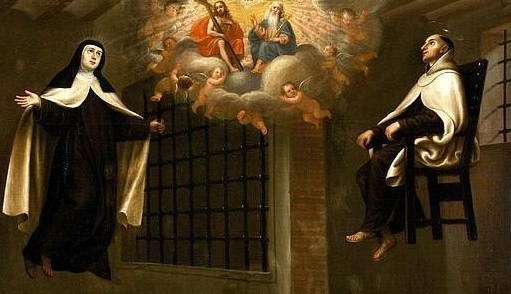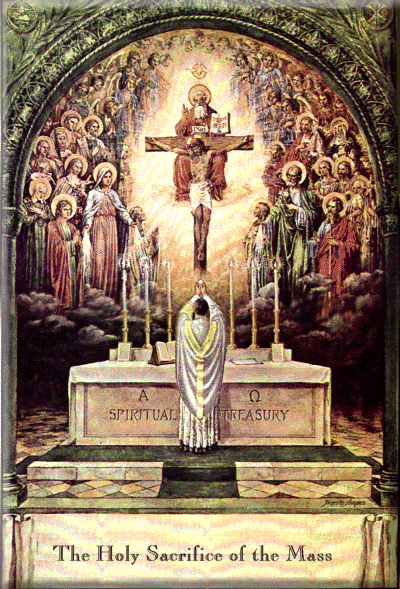The Catechism of the Catholic Church says this about the mystical life:
“Spiritual progress tends toward ever more intimate union with Christ. This union is called ‘mystical’ because it participates in the mystery of Christ through the sacraments – ‘the holy mysteries’ – and, in him, in the mystery of the Holy Trinity. God calls us all to this intimate union with him, even if the special graces or extraordinary signs of this mystical life are granted only to some for the sake of manifesting the gratuitous gift given to all.”
CCC 2014
This is a gem of a paragraph that is the fruit of the early to mid-20th century movement that promoted the universal call to mysticism. This movement included Dominicans such as Venerable Juan Arintero (1860-1928) and Reginald Garrigou-Lagrange (1877-1964). Paragraph 2014 of the Catechism can guide us in the mystical life and in how we should read the mystical texts of the Christian Tradition.


There’s a lot here in paragraph 2014. But note what it says about the “special graces or extraordinary signs of this mystical life.” It says “they are granted only to some [but] for the sake of manifesting the gratuitous gift given to all.” Even the most extraordinary of Christian mystics has a likeness to the ordinary Christian life. For instance, a Padre Pio who bore the wounds of Christ manifests externally what is true of all of us internally. Every baptized Christian has a share in the Passion of Christ. So what Padre Pio says about his extraordinary share in the Cross is still helpful for us—for example, his letters to his spiritual director about receiving the stigmata. We too can learn from what he says and with discretion apply it to our own spiritual life.

Or consider St. Teresa of Avila and her vision of the Trinity as she entered into Spiritual Marriage. That is probably not our own experience. Yet the blessed Trinity does really dwell in our souls and we enjoy a union with God by grace. So reading what Teresa has to say in the 7th mansion can still be helpful to us. We need to read it and apply it to ourselves with prudent discretion, but what she says applies in its own way to every Christian soul. And as Teresa reminds us, it would be a false humility and cowardly not to pursue the heights and depths of union with God (Interior Castle I:2.11; I:1.3-4).

What the saintly mystics say about their own mystical experience of the Trinity or the mysteries of Christ is not so far removed from our own. We may be dwarfs next to these giants, but we do belong to the same race of men and women and more importantly the same grace and indwelling of the Trinity has come to us. The same life of the Trinity is in them as in us. Reading their vivid descriptions helps us appreciate and cooperate with the gift freely given to us too.

Based on the Catechism we can say the following. Strive for mysticism, but an austere mysticism. It’s like what St. John of the Cross presents to us, a mysticism that leaves the imagination empty, the emotions subdued, the desires free of superficial pleasures, and the ego vanquished. Yet it’s a mysticism that touches God in the depths of one’s spirit—or, rather, receives these touches of God—hidden in darkness, in silence, in the interior desert. It’s where “Deep calls to deep,” even if “in the roar of waters” (Ps 42:7), that is, even if in the (re-occurring) scandal of the Cross. Strive for a mysticism that can be maintained in the midst of activity and even in affliction. Strive for an austere mysticism of the depths!
The extraordinary signs of the mystical life, in whatever form, should lead all of us more deeply to the bare essentials of the reality through faith, hope, and charity. This is what it did for the Saints who had such extraordinary experiences. For the greatest gift is God Himself.
The Catechism calls “mystical” the “ever more intimated union with Christ” and with “the mystery of the holy Trinity” (CCC 2014). This is what we seek after, true intimate union—Spirit to spirit, Depths to depths, Being to being. It’s an intimate union that does not fluctuate with our changing moods, sentiments, or thoughts, but one that can remain constant through calm and tribulation, light and darkness, joy and sorrow. It’s an austere mysticism of the depths. It’s about the bare essentials, for this gets us closest to God as He is in Himself, in the reality of His Mystery, the bare and naked Godhead, the Beloved Three in One.

